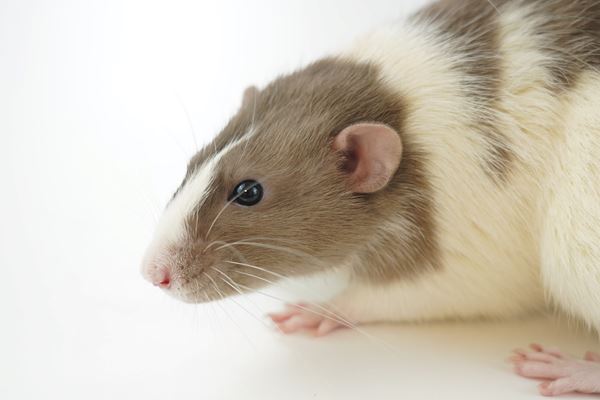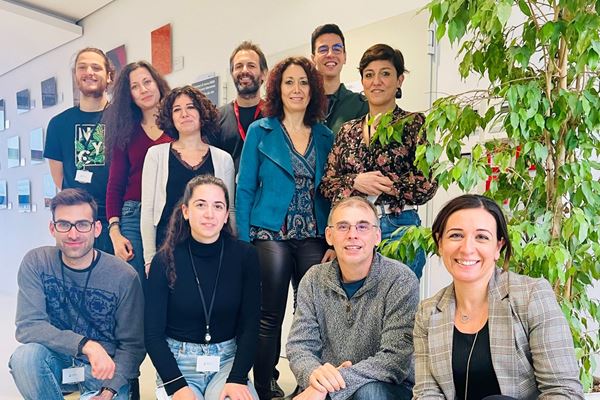Why do we support the use of animals in research?
11th July 2023
Without the use of animals in research we would not be able to find nearly as many cures for cancer that could save millions of lives. Not all of our research needs the use of animals, but for some scientists it is an essential research tool that helps discover new cancer cures and test if they work. But what do we mean by animal use? And how is it regulated?
Why is the use of animals needed?
To work out how cancers develop and spread, there are different techniques researchers can use. Sometimes they do experiments using cells grown in the lab, others use computer programmes to study how cancer behaves, or a researcher might look carefully at samples from human tumours. But seeing how cancer grows in a living organism can help scientists understand more about how tumours behave and spread and can give clues about potential new cures. Testing new treatments in animals can give a reasonable idea of how it might work in a person and if it is safe.

What animals are used in research?
Thanks to you, in 2022 we funded 30 new discovery research projects around the world. Out of these, 23 projects involve animal research. In 22 out of 23 of these projects the animals used are mice, and in one of the projects the researchers are working with a type of fruit fly called Drosophila.
Mice are so commonly used because they are small, relatively inexpensive and genetically 85% the same as us. They have the same set of organs as us and get the same types of diseases, including cancer. Researchers know a lot about the biology of mice because they have been studying them for a long time, which makes it easier to spot anything different to the norm. Mice also have a short life cycle meaning they reproduce quickly and often, and researchers can easily study them at all stages of life.

What do we ask of our researchers?
For Dr Laura Soucek in Spain, her experiments with mice were vital to prove that her new cancer drug Omomyc can prevent cancer. Without the data from her mice experiments the drug would not have been approved for clinical trials.
Like all our researchers using animals, Laura had to follow our animals in research policy. That means explaining that there were no alternative ways to do her research and that efforts will be made to replace, reduce and refine the use of animals. We only spend your donations on animal research projects that comply with all applicable laws, regulations and animal welfare standards.

How is the use of animals in research regulated?
There are strict rules around the welfare of animals used in research to ensure they have sufficient space, food, water and care. In the UK, the situation is being closely monitored by NC3Rs, the National Centre for Replacement, Reduction and Refinement of Animals in Research. This scientific organisation helps researchers find ways to reduce or replace the use of animals in experiments, or to improve how things are currently done, so that fewer or no animals will have to be used.

How are we helping to reduce the need for animals in research?
One of our researchers - Professor Stefano Biffo in Milan - is exploring a new state-of-the-art technique which may reduce the need for animals in research. Stefano and his team are hoping to create an animal-free model which is a type of a 'co-culture' that works by circulating white blood cells with cancer cells from patients using instruments called 'millifluidic devices'. This will enable the team to study interactions between the tumour and its environment, find out more about how cancers develop and allow the identification of new therapeutic targets. If successful, this new model will help to remove some of the need for animals in research.
In the future there may be better ways to do research without the need to use animals. For now, animal research remains a vital way for our researchers to discover and test new cancer cures.

This article was originally published on 28th October 2022, and was updated in 2023 with details of our latest projects.
Our animals in research position statement
Our mission is to kick-start the life-saving cancer research advances of the future by sowing the seeds of new discoveries today. We sit at the very start of the research journey, backing brand new ideas and supporting scientists to ask big, challenging, new question about how cancer works.
To achieve this, we support pioneering, innovative research that aims to find new and better ways of preventing, diagnosing, and treating cancer. Much of this research is carried out without involving animals. In certain areas, however, laboratory animal research remains an essential tool to translate ground-breaking discoveries into new tests or treatments for cancer that could save millions of lives.
This is why we believe properly regulated animal research is both necessary and justified when there is no other alternative.
Worldwide Cancer Research is committed to ensuring the animal research we fund is as robust and reproducible as possible, and that the highest standards of laboratory welfare are met. We therefore recognise the importance of the principles of the 3Rs (Replacement, Reduction and Refinement of animals in research), and actively support their implementation.
As a member of the UK’s Association of Medical Research Charities (AMRC), we fully support their position statement on the use of animals in research. The full statement can be found here.
We have signed the Concordat on Openness on Animal Research in the UK, demonstrating our commitment to helping the public understand more about the use of animals in research.



